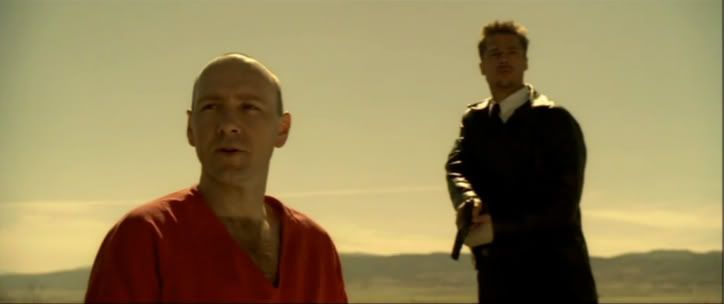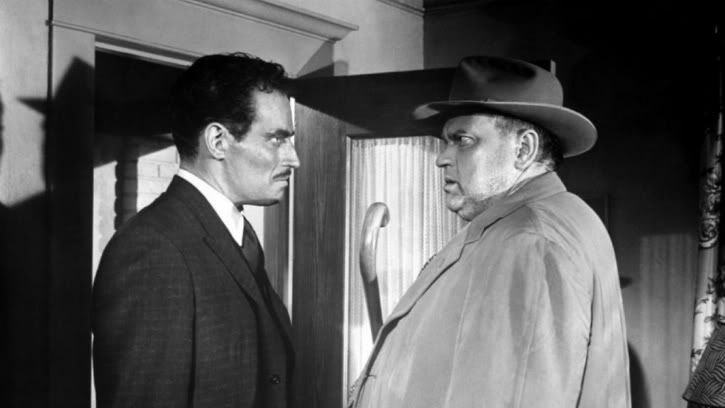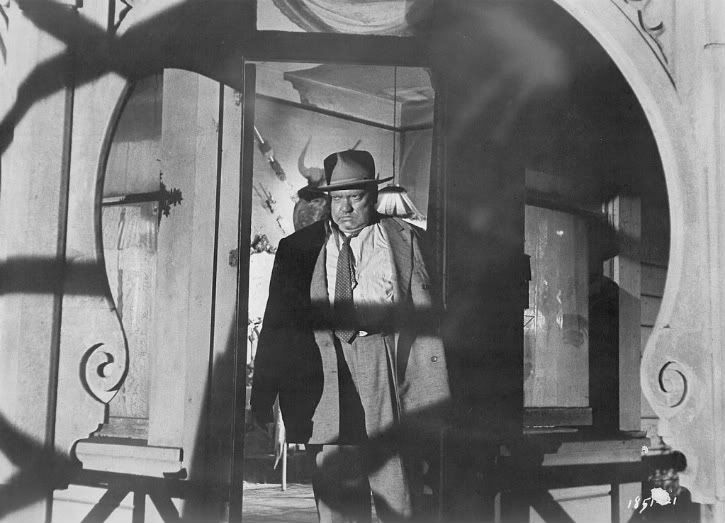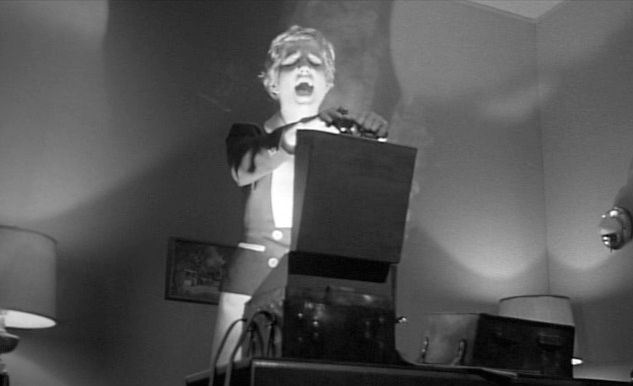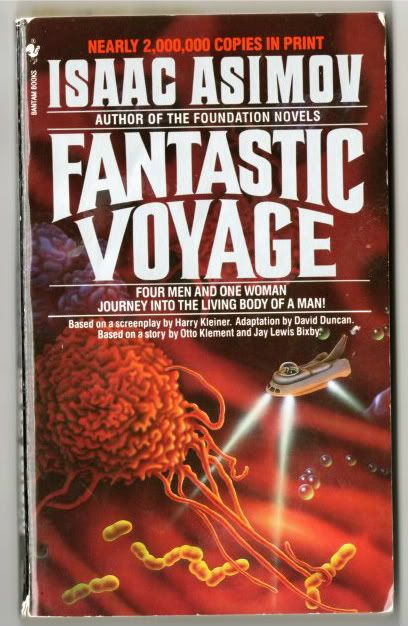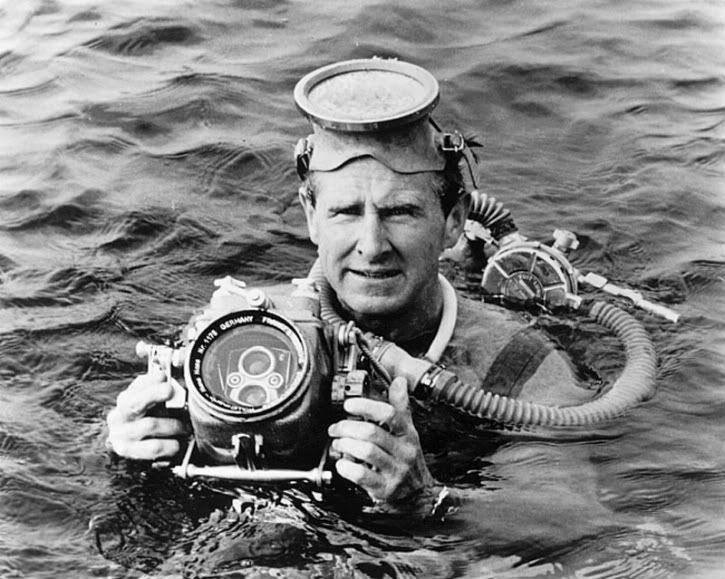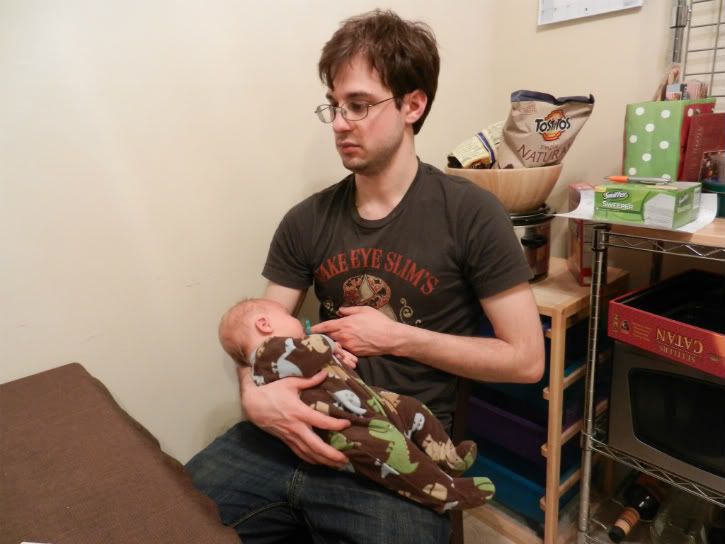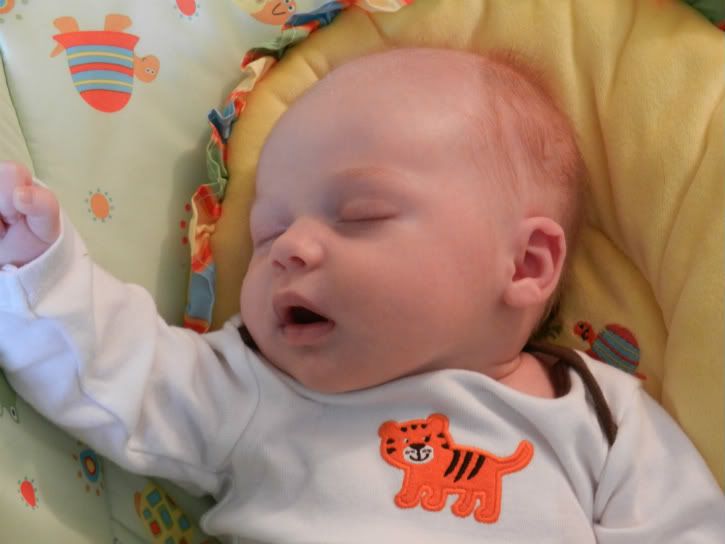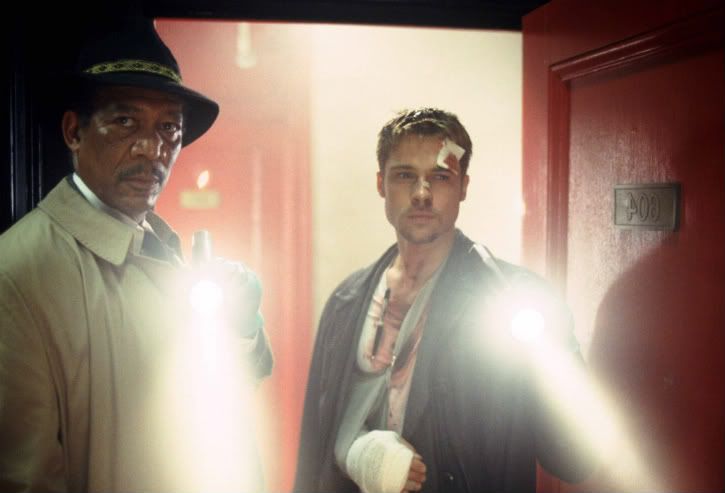
This is my paper from a college film noir class. Originally written in 2003.
Spoiler...
“Seven” or “Se7en” (1995) directed by David Fincher is a great neo-noir because it is able to explore, in an updated way, the noir theme of the city as a corruptor. For instance, Det. Somerset (Morgan Freeman) seems to be a noir character. I’ve always pictured him being from this lost noir film, but it’s just a fantasy since race relations being what they were in the noir period Freeman never would have had a lead role. But, that’s the fun of neo-noir: we are able to apply our modern values to the themes of the classic genre.
From his first scene, where Det. Somerset (Morgan Freeman) asks about whether a child witnessed his parent’s homicide, we learn that Somerset is different from the other police officers around him. He still has his basic humanity. However, his humanity is also a burden. Somerset is tired of this inner struggle and has decided to quit the police and get away from the city before it can destroy him. When Somerset gets into a taxi, the driver asks him where he’s headed. Somerset stares out of the back seat window at the city streets and replies, “Far away from here.” The metronome Somerset uses to drown out the noise of the city comes to represent his dream of getting away. When Somerset smashes the metronome it is clear that he is no longer leaving.
Somerset’s clothes are a clue that he belongs to the noir period. Somerset wears a white shirt, dark vest, dark tie, tan trench coat and a black hat. There are many other clues that Somerset comes from some unseen noir film. First, unlike Det. Mills (Brad Pitt), Somerset doesn’t own his own car, which only made sense in the noir era when gas prices were higher. Second, we learn from the exposition that Somerset had been close to getting married, but it didn’t work out, which is exactly what happens at the end of just about every film noir movie; the hero loses the girl. Third, Somerset uses his mind and not his brawn to catch villains. Somerset even confesses to Mills that he’s only taken his gun out once and never fired it. Film noir was the first genre to explore psychology and the inner workings of the mind.
The use of sound in this film is significant because it enhances the messages conveyed in many scenes. For instance, in the first scene where Somerset is putting his clothes on and getting ready for work, there is no sound but the background noise of the city. It is as if the noise of the city was a weight over Somerset’s head. There is an excellent use of music in the middle of the film when Somerset visits a library after hours. As a lark, one of the security guards puts on some classical music. It is the first time that Somerset seems to escape the sounds of the city and it is clear to the audience that for this brief time, Somerset is in his element and is truly happy.
The casting choices for this film are interesting and definitely significant. Casting Kevin Spacey as John Doe, the murderer, is a chilling choice. Spacey is sort of an everyman and doesn’t look at all threatening. In other words, evil can take any form; it can be right next to you and you wouldn’t even notice until it was too late. Gwyneth Paltrow, (who played the ill-fated Tracy Mills) is an American sweetheart and so her murder becomes all the more significant. Doe doesn’t just kill Tracy Mills, in a way, he breaks our spirit by killing a symbol of the American dream.
The setting contributes to the theme of the city as a corruptor due to it’s mysteriousness and sense of danger. The city where all of the action unfolds is mysterious because it is never named. All we know is that it is a seedy inner city which as Somerset says ,“is not someplace where most people try to get assigned to.” There is a sense of danger about the city, because it is always raining. The murderer says he only felt as sorry for his victims as he felt for the people of Sodom and Gomorrah. However, the city seems to bring to mind another bible story, the story of Noah and the forty days flood. I also believe that it is significant that at the end of the movie the killer leads the detectives out of the city and into a rural area. It is as if he is spreading the corruption of the city outward. Also, it can be interpreted that Somerset realizes that he can’t escape his troubles by simply leaving the city. He sees the killer’s evil outside of the city and realizes that it is people that are evil, not the city itself.
The theme of the film is also enhanced by the sparseness of the lighting. Every time Mills and Somerset go into a crime scene or a strange apartment they have to use their flashlights because there is no light. This instills a sense of panic, evil and danger. However, you question why they can’t just turn on a light? Along with light goes color, and thus color was also sparsely used in the film. Every color in this movie seemed dulled. In fact, the only bold color in the entire film was the killer’s orange prison shirt. This is as if to say that even in a dangerous city, evil can still stand out if you stop and look close enough.
One might argue that Det. Mills is the protagonist/hero, because he goes on a clear emotional roller coaster at the end of the film. However, I think Det. Mills, emerges as a tragic character who has been undone by his own frailties and weaknesses and his journey is important because it is a turning point in Freeman’s life. Freeman is the protagonist because it is his journey that meshes most closely with the theme of the film. Somerset has been invigorated by this case, and he has found that he still has the drive to combat the evil and corruption of the city, a drive he thought he had lost.
